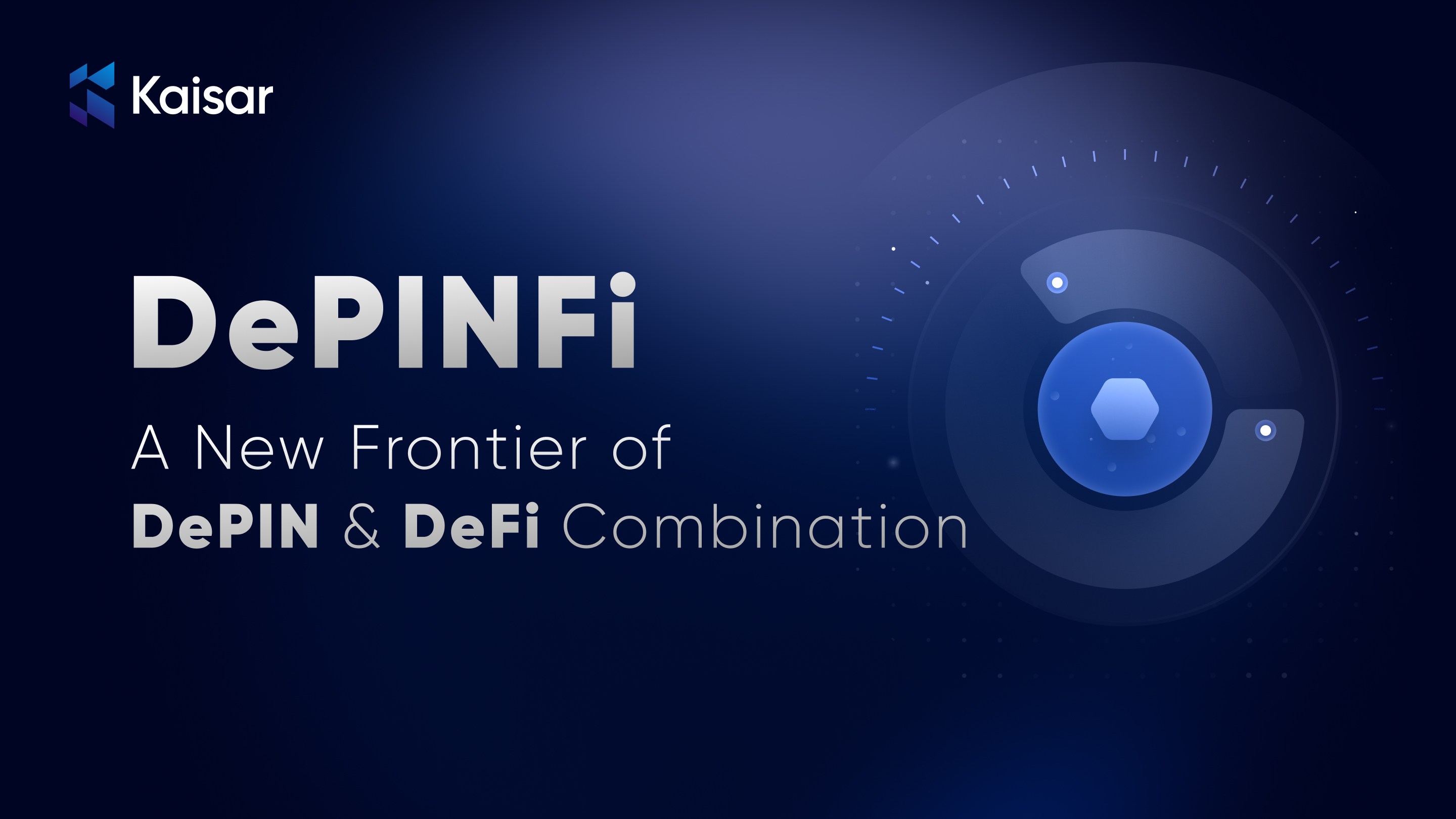Merging of decentralized finance(DeFi) and decentralized physical infrastructure networks(DePIN) in recent years has given rise to an immense new concept called Decentralized Physical Infrastructure Network Finance(DePINFi).
With DePINFi, the DePIN infrastructure processes can now be used in combination with financial tooling of DeFi. DePINFi offers decentralized financing of assets on a distributed physical infrastructure opening up new ways of participating, earning, and innovation.
In this article, we will delve into what DePINFi is, how it works, benefits, challenges, and future prospects for this new ecosystem.
What is DePINFi?
Decentralized Physical Infrastructure Network Finance(DePINFi) is a combination of two latest innovations: decentralized physical infrastructure networks (DePIN), and decentralized finance(DeFi).
To better grasp fully what DePINFi is, let’s first overview how each concept works.
DePIN
DePIN are distributed networks used for the creation, management, and optimization of physical infrastructures. The infrastructure can be decentralized sharing of computing power, telecommunications or even renewable energy resources. In distributing the responsibilities of infrastructures among a community of participants, DePIN democratizes ownership of these resources.
DeFi
DeFi stands for decentralized finance or financial services facilitated via blockchain protocols. It involves lending, borrowing, yield farming, and asset exchange with out any intermediaries such as banks. DeFi has made possible a more open, accessible, and equal financial system.
DePINFi
When connecting both ecosystems DePINFi can leverage DeFi to create financial incentives for contributing participants of a decentralized physical infrastructure network.
By leveraging token-based DeFi models, DePINFi can encourage contributors to provide their infrastructure resources-whether storage space, computing power, or connectivity-for monetary reward. Such combination unlocks investment opportunities and a new way by which decentralized infrastructure can be financially supported.
DePINFi: Benefits of Integrating DePIN and DeFi
The DePIN and DeFi combination aims to bring a plethora of advantages which are mentioned below:
Reward Mechanisms
One of the main beneficial changes is of reward mechanisms. The reward incentives can be tailored according to the need to encourage contributions in the form of physical resources to the DePIN networks.
For example, participants contributing GPU power to a decentralized computing network can receive tokens from it. These tokens can again be used or traded within the DeFi ecosystem to set up a frictionless value exchange process while promoting higher participation in infrastructure projects.
Read more about DePIN rewards.
Financialization
DePINFi allows financialization of physical infrastructure assets which enables participants to create liquidity surrounding assets that were previously illiquid. In this manner, individuals would readily make purchases on physical infrastructure, democratizing access to such investments.
New Business Models
DePINFi fosters new business models by creating an avenue for decentralized services that can exploit access to physical assets in exchange for financial gains. For instance: Renewable energy projects, can utilize DePINFi to reward users who generate and distribute solar power while gaining tokens whose value is actualized within the DeFi space.
Challenges of DePINFi
While DePINFi has some exciting prospects there are some challenges that has to be overcomed:
Scaling
Scaling DePIN and DeFi can be technically difficult due to their infrastructure complexity and architecture.Both the DePIN infrastructure layer and DeFI finance layer should be efficient to not compromise the integrity of the whole system.
Read more about Scaling Challenges.
Regulatory Compliance
Another challenge is regulatory compliance. Regulating DeFi contradicts its largely anonymous decentralized nature then integration with physical infrastructure can create additional legal complexities, especially for regions having strict infrastructure and financial regulations. Navigating through these regulatory landscapes will require careful planning and potentially new frameworks.
DePINFi Future
While the DePinFi landscape of present has some challenges to face as mentioned above but on the horizon, things are looking great for DePINFi.
Research and development on the blockchain technology is maturing fast and are developing scalability solutions like layer-2 protocols to improve the performance of DePINFi networks overall.
Tokenization is picking pace, with investment interest in real-world assets to provide a growing exposure for a robust DePINFi growth. More industries will begin to recognize the worth of decentralized infrastructure and finance, and a wave of innovation can be expected that will revolutionize both sectors.
Conclusion
To conclude,DePINFi represents a turning point in the intersection of decentralized finance and physical infrastructure networks.
Built by overlaying the strengths of DePIN with DeFi, DePINFi hopes to provide new incentives and investment structures for decentralized infrastructure that would previously have been impossible to attain.
Despite the scalability and regulation challenges DePINFi aims to bring boundless benefits which set them apart . DePinFi will also give emergence to new technologies and has the potential of propelling as a leader into the decentralized economy.

